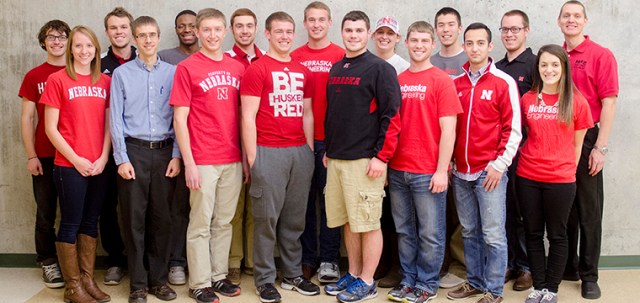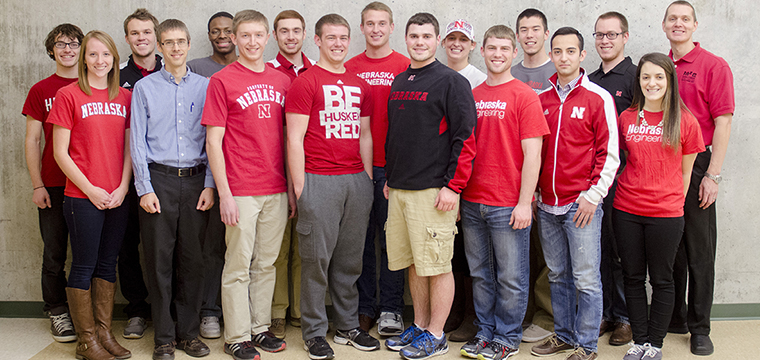Kent McDill, April 18, 2014
If all goes according to plan, a group of University of Nebraska students will go up in a microgravity flight simulator this May to see if an astronaut can absorb a robotic capsule that can diagnose internal disease.

Students from the University of Nebraska?s College of Engineering, along with students from other disciplines, have been working since October on an experiment they plan to conduct while going into 30 parabolic loops on a flight out of NASA?s Houston base. This is the seventh year the UN College of Engineering has worked with NASA Microgravity University, which involves college students from many different universities to conduct experiments related to the work done by astronauts while in space.
The UN students plan to study the effects of microgravity on a robotic capsule endoscope (RCE) to see if it will adhere to tissues in the small intestine, allowing it to do its work.
In order to take the flight, however, the UN team has to prove they can simulate the peristaltic motion of the stomach on a synthetic intestine so that they can determine if the RCE can withstand the mechanical force of the human stomach as it attempts to pass a foreign object (in this case, the RCE) and still find its target for attachment, all while in the very slight gravity that exists in outer space.
If this Microgravity experiment works, the RCE eventually will have biosensors attached that will be able to diagnosis internal conditions such as bleeding, inflammatory bowel disease or Crohn?s.
On the ground, there are two teams - a team building the RCEs they need for the experiment, and a team that is designing a method to make the synthetic intestine pass the RCE through itself to a point where it can attach to the wall of the intestine.
?We spent about a year developing the device that mimics the two main components of human peristaltic motion, the pulling and the squeezing of the intestine back and forth,?? said Piotr Slawinski, the student team leader. ?We need to move the capsule about 10 centimeters, but we have to be able to move it while existing in microgravity.?
Making the task more difficult is that the teams (two separate teams will be going up) will be in microgravity only 20 seconds at a time, as the hollowed-out Boeing 727 achieves near zero gravity. They will have approximately 30 20-second periods to accomplish their task.
?During these points of minimal gravity, we are going to be doing our experiment, floating around our equipment, videotaping all of the experimentation, and hopefully everything will go as planned,?? Slawinski said.
The experiment is being developed on the ground in such a way that when the team is actually in the air and they achieve microgravity, all they have to do is press a ?go?? button and watch what happens. Then, when gravity returns and the next parabola begins, they can reset the experiment as needed.
The NASA Microgravity University is a multi-institutional program, so that while the Nebraska team is in the air, there will be teams from two or three others schools on the flight with them, conducting their own experiments.
In order to participate, the individuals on the team have to go through physical testing in anticipation of the unusual conditions they will experience on the flight.
?During that week, there will be a lot of (physical) training that goes on, and I actually have never done that before, so it will be a learning experience for me,?? Slawinski said.
So the team of students will climb aboard the plane with their experiment bolted to the airship?s structure, fly high into the air, drop precipitously to produce the proper gravitational conditions, conduct their experiment, and then do it again. At the end, the will have some idea whether their experiment works.
??Hopefully we will have a strong reason to believe there is a viable solution to monitoring astronaut health,?? Slawinski said.
The team of students are working with Ben Terry, assistant professor of mechanical and materials engineering, along with Carl Nelson, associate professor of mechanical and materials engineering, and Dustin Dam, a former UN student and Microgravity team member who works with the Department of Electrical Engineering.







